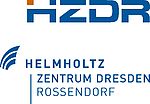Targets
Target A: characterization of primary ores
The goal is a detailed characterization of chromite layers in 3D, taking into account variations in mineralogy, grade and thickness, as well as the effects of surface weathering in the different reefs exploited. Variations at the macro and the micro scales are addressed in work packages A-1 and A-2, respectively.
Work Package A-1: Macroscale features of the orebodies
Work Package A-2: Ore characterization at the micro-scale and PGE deportment
Target B: effects of surface weathering and oxidation
All near-surface mining encounters variations in mineralogy and microfabric of ores caused by alteration or weathering. The recovery of PGE from oxidized ores is known to be very poor when compared to primary ores, and Target B takes up the challenge to quantify changes in ore properties for improvements in beneficiation efficiency.
Work Package B-1: Geochemical and mineralogical characteristics
Work Package B-2: PGE mobility and behavior in oxidized zones
Target C: beneficiation testwork and geometallurgic models
Target C will perform process mineralogy and beneficiation tests for ore types defined in targets A and B. The results will be used to define geometallurgical domains of ore types with similar properties, composition and beneficiation behaviour. These domains will be mapped back onto the mine plan to achieve a geometallurgical model of the deposit suitable for selective mining and/or flexible beneficiation flowsheets. Finally, an economic assessment of potential benefits of implementation will be made, taking into account the total costs and efficiency in terms of, e.g., energy and chemicals consumption, environmental impact, etc.
Main partners:
HZDR, MINTEK
Tools and methods:
The beneficiation tests examine three key process steps: milling of ore and concentrates, density separation, and flotation. The efficiency of each depends critically on particle size distribution, mineral composition, surface properties and these may vary from one domain type to another. Hence, lab-scale tests of the above processes will be undertaken on samples of the defined domains to determine their individual metallurgical response. Intermediate and end products will be examined in detail mineralogically and assayed for their PGE contents to assess recovery success.
Development of a geometallurgical model will integrate three steps: (1) stochastic geometric models of ore types based on detailed, quantitative data on microstructures, textures and chemical composition (from WP A-2 and WP B-1); (2) geostatistical modelling integrating the spatially-resolved macroscopic data on ore bodies and grade distribution (from WP A-1); (3) process modelling based on beneficiation testwork for the full range of relevant ore feed materials for the Thaba mine. The final model can be tuned and optimised with further experimental study. Once set up and tuned, the model can simulate the effects of various material streams and processing routes and parameters for each domain of the deposit to be mined. The model will be used to compute an optimal fixed processing scheme within the tested framework, and this will serve as the benchmark for evaluating costs and benefits of adaptive processing.










